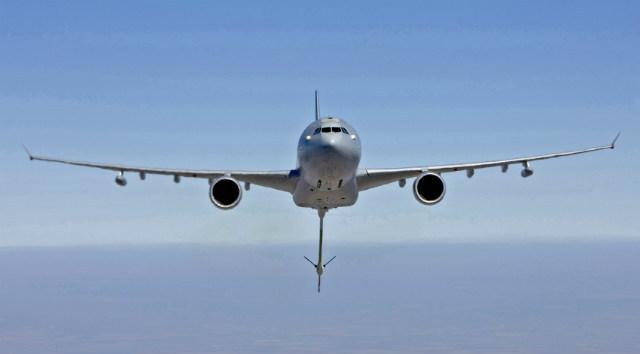Which Aircraft Do You Think Should Win The Bridge Tanker Contract?

The prize is a contract to deliver 140-160 commercial derivative aircraft between 2029 and as late as 2042. The bidders are the Boeing KC-46 and a Lockheed Martin/Airbus team offering the A330 Multi-Role Tanker Transport (MRTT).
The dynamics include an already partisan debate in Congress about the U.S. Air Force’s tanker acquisition strategy, Boeing’s troubled track record on the existing KC-46 contract and an escalating appetite for air refueling capacity to support expanded operations over the Pacific Ocean.
The competition for the Air Force’s Bridge Tanker officially started on June 16. The Air Force’s acquisition office for Mobility Aircraft published a request for information. The document fulfills a mandatory step in the Federal Acquisition Regulations, which require the Air Force to search for all companies capable of competing for a new contract opportunity.
Which aircraft do you think should win the Bridge Tanker contract? Cast your vote below in our interactive poll: Please note that the poll may take a moment to load.
Take a look at the Premium Aviation Week Intelligence Network Analysis for more: The Weekly Debrief: Can Refueling Capacity Shortages Bridge A Tanker Divide?





Comments
Sounds like a no-brainer (before political considerations and the additional costs of a 2nd integrated logistics & support setup are taken into account)
This would avoid spending valuable procurement dollars on the production of tankers which will be obsolete before they even leave the assembly line. A better plan would be to bring the KC-X program forward.
The KC-46 is clearly the choice but the RFP language is doing to determine if its a real competition or not.
The A330MRT is more a KC-10 class and how needed the KC-10 is overall vs it ageing out is going to be a factor.
USAF leadership has proven to be totally inept (F-35) and can't find its way so who knows what will come out of this.
Whether the USAF can wait that long, or want to buy that many over twenty eight years before going for a design made for purpose is a different question.
1. Yes, they've both had development problems, but the KC-46 is still going through those whilst the A330 MRTT has sorted theirs out.
2. Setting up a 2nd supply chain is an additional cost, but this could be used to drive down overall KC fleet costs through competition (one past example being the 1980s Great Engine War between P&W and GE for F15 & F-16 engines, once the GE F110 was qualified for both airframes).
3. "May cut off your supply" needs challenging:
a. Any USAF buy would require a US-based FACO capability (probably at Airbus Mobile, Alabama). This was a standard requirement of all the KC-45/46 competitions run by USAF over the last 2 decades, and means most of the procurement and support $$$ would stay in the US.
b. A330 standard spares are common worldwide to any airline and a fair percentage of them are sourced from the US anyway. Nothing stopping USAF from setting up a US-based 2nd production line for the few critical military spare parts they consider essential / vulnerable to any action by "the Europeans".
c. Airbus is a commercial company (it has fought very hard over the last 20 years to struggle free of French and German political controls). I'm not clear how "the Europeans" would even decide to impose any sort of spares / support embargo, as you'd have to get at least France & Germany to agree to this - and then run the risk of Airbus saying "No" on commercial grounds. Both France & Germany also rely strongly on US kit, so (at least on the military side) they'd be very aware of potential retaliations.
d. There's no such thing as "the Europeans" as the European Commission does not have the power to decree anything diplomatic, despite what they'd like to think.
e. Finally, to be quite frank (as someone from the east side of the Pond) every time we buy US-sourced kit we have to comply with ITAR and the risk that DoD / State may cut spares & support off at any time, even though we're one of the US's most reliable allies. Works both ways.